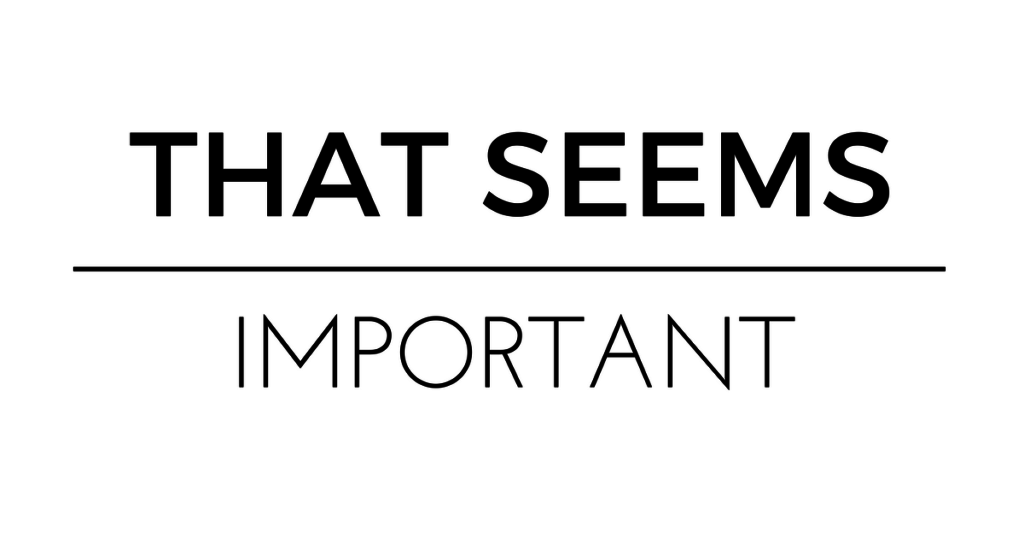No one likes promoting themselves.
It’s awkward, uncomfortable, and makes us all feel like we’re bragging and annoying people.
When you start to feel like, “I’m not a salesperson. I’m the subject matter expert. I shouldn’t have to do this. I’m above this.” one of four things happens:
- You start to explore your paid-ad options because the thought of organically growing something makes you want to throw up.
- You convince yourself affiliates are the way to go because it’s “efficient” and “gets you in front of other already existing audiences.”
- You seek out a social media expert who will “do social” for you.
- You do nothing because you’re waiting to get all your “ducks in a row” before you promote anything.
The trouble with each of these approaches is that they don’t solve the real problem.
The real problem is that you hate self-promotion and you don’t want to do it.
And when we don’t want to do something, we’ll do anything to avoid it (including making bad business decisions) because we’re being motivated by fear instead of being objective about what’s best for our business and our customers.
So, I’m going to explain why these approaches are no beuno for this stage of the game and then give you a better way.
Why You Don’t Want to Start With Paid Ads:
A general rule of thumb for paid ads is that your cost per acquisition (CPA) needs to be less than your customer lifetime value (CLV). Which makes sense because if it costs you more to get a customer than the customer is worth, your business loses money (which defeats the purpose of your ad in the first place).
A lot of people think, “Eh, I’ll throw $100-$500-$1000 at Facebook and go from there.”
But until you have consistent sales, you have no idea what your customer’s lifetime value (CLV) is. You’re just guessing whether this strategy is positively impacting growth.
Worse, you risk hyper-focusing on the wrong numbers like impressions (how many people saw your ad) instead of sales (how many people bought from you).
To add insult to injury, there is sophisticated art and science to writing ads. If you are averse to selling in the first place, then you’re going to suck at writing a strong (or even good) lead-generating ad the first few times around.
Did I lead with the right benefit? Did I have a strong enough call-to-action? Was the design clean enough? Was it clear what my ad was trying to say? Should I send people to a landing page or to a sales page? Do I make them opt-in first?
Unless you’re a huge weirdo like me who loves this stuff, you probably have a headache from reading that paragraph.
Running ads when you’re just starting out is like doing a 5-day-cleanse when you’re trying to lose 60 lbs.
You’ll lose a few pounds, but it won’t fix the real problem.
The Problem With Affiliates:
The logic I hear for this approach is solid – get in front of already captive audiences. That is smart. But there are better ways to do this out of the gate than affiliate selling.
The most effective way to sell is to develop a relationship with the audience before you start selling them something. Which takes a long long time.
The reasons have to do with market norms vs social norms. Market norms are the unofficial laws governing behavior in a transaction involving money. Relationships governed by market norms are formal and strict, “I will do X for you for $X. The end.” This is how traditional businesses functioned in an industrial economy. Makes sense.
In a connection economy, however, you want to lead with social norms, especially if you’re trying to build a following.
Let’s say you went to a friends’ place for dinner and realized you forgot to bring wine. So, you hand them $30 cash when they open the door instead of wine. They’re financially equivalent, technically. But how would your friend react?
It would be weird. So WEIRD.
Same thing with your audience. You want to hand them wine.
If you go the affiliate route and don’t yet have a list, I’d recommend not selling anything at first. Provide value for free, like a PDF or lead magnet specifically for that audience. Get them on your list before you start selling to them.
The affiliate approach is appealing because you can piggyback off someone else’s existing relationship with their audience without having to do the work. But…
Most people are lying about how engaged their audience is. So, while you may be getting in front of them, you don’t *actually* know if that person has the loyal interested audience they promised.
If you’re starting out, you want to have a relationship with your audience first. That’s where you want to spend the bulk of your time.
Why You Don’t Need To “Do Social:”
Posting things randomly on social media is not “doing social.” I’m not sure what “doing social” is, but I suspect what people mean is that they want someone to post on social media platforms for them.
The problem with this is that it assumes that your audience is sitting around ready and willing to buy, click, or comment on your posts.
There’s nothing wrong with hiring an expert and going out-of-house for your social media. If you’re paying for social strategy because you don’t have the bandwidth and your prospects are on Facebook, all good.
If you’re paying for someone to post broadcast messages because you think you’re “supposed” to be on Facebook, then Houston we have a problem.
Before you pay for an expert, you have to understand how social works and why you’re on it in the first place.
What is the business reason you’re on Facebook? Twitter? Snapchat? How is it helping you meet your goals?
You’re thinking, “Margo, obviously it helps me to get the word out.” And you’re wrong.
No one is sitting at home flipping through their feed waiting to hear about your promotion.
People want to watch their bestie’s engagement video or see pics from a party last week or OMG A PUPPY IN A SWEATER. We engage with content that’s relevant, valuable, and interesting to us. (You’re on Facebook, you know this: You want to interact with your friends.)
There are no secrets about Facebook’s function now that you have a business. The laws governing social media remain the same. It’s social.
The reason you feel unqualified to do it now is because you feel self-promotey.
And rightfully so – it’s uncomfortable. You have to post in front of friends, family, and people who might not be your target market. And it’s terrifying because they’re all judging you (or at least, it feels that way).
What’s worse is that you’re posting into the ether, being totally ignored, getting zero engagement, and feeling like poop about your efforts.
It feels futile in the beginning because no one is paying attention and that sucks.
It’s also really hard.
Even if the rules remain the same, you’re not the same. You’re thinking like a business and start to speak in a different voice.
Whenever we stop thinking like a person and start thinking like an entity, we talk like a used car salesman in what I call “the overly chipper effect.”
It turns people off.
Customers and prospects are people. It helps when you talk to them like people.
That doesn’t mean that you shouldn’t create a social media strategy or editorial calendar or eventually hire someone to help you manage social. But in the beginning, there is no substitute for you developing a relationship with your audience. And facing the awkwardness.
On Doing Nothing:
We love nothing.
Nothing feels safe.
Because it’s not *really* nothing.
It’s waiting, preparing, getting all of our ducks in a row. You’re doing a lot of work while you’re doing nothing.
You make a laundry list of things that you must have in place before you can start promoting.
“My site isn’t optimized.”
“My copy on my about page isn’t done.”
“I need a logo.”
“I don’t have my funnel optimized.”
And they’re all perfectly legit reasons.
Trouble is there are always perfectly legit reasons to do nothing.
There are a million things wrong with this website right now. Typos I haven’t caught yet. No lead magnet. A crappy logo that I made in an hour and now won’t load properly, but I haven’t had a chance to fix it.
The point is this: there are a million things that are wrong and will continue to be legitimate reasons for you not to act.
All of these all ladder up to the one real reason you’re not promoting: fear.
Aversion to self-promotion has to do with fear.
Is my pitch is bad? Is this idea really dumb? What if people think this is stupid? What if no one cares?!!
Here’s the truth: Your pitch is bad. People will think what you’re doing is stupid. And no one cares.
Read The Surprising Power of Low Expectations
Let’s just start there. It’s a heck of a lot easier.
No one got on a bike and started riding. Not even prodigies. Same rules apply here.
You’re going to suck at promoting yourself, your business, and your ideas until you’ve done it, a lot of it.
Which is why, despite being perfectly wonderful marketing approaches, paid ads, social media, and affiliate marketing won’t help you at this stage. They prevent you from addressing the real problem (fear). And that will follow you around for the rest of your life until you address it.
The Toe-Dip Approach:
I was never the kid who jumped straight into the pool if it was cold. Or warm. Or ever. I was scared of getting my hair wet and being really cold. You know, legitimate things.
But if I didn’t get in the pool, I’d be forced to sit outside with my parents who were not fun to play with. So, I’d get in the pool slowly. At my comfort level. Starting with my toe.
If I determined the temperature wasn’t life-threatening, I’d put my entire foot in. Then my leg (but only up to my knee), then up to my thigh…eventually, I got in the pool and had a blast.
That’s how I recommend you address your discomfort with self-promotion. Slowly and methodically, without wasting too much emotional energy hating yourself or squandering money on ads before you’re ready to run them properly.
The idea is to build up your tolerance for discomfort in stages. Dip your toe in.
I like to start by doing things that are kind of visible, but not too visible:
- Update your Twitter bio with a link to your site (and a blurb, if you’re daring)
- Update your Instagram bio with a link to your site (and a blurb, if you’re daring)
These don’t broadcast your updates to anyone, so you can start to get comfortable with the link being live and existing in a (technically) public place, but no one will really see it.
Then you can stick your foot in:
- Update your Facebook bio and/or put your link on your profile somewhere.
- Tell a friend you trust about your new project. Over drinks. Even if they’re not your market (unless you have really crappy friends), they’re going to be excited for you regardless of the topic. And that excitement helps.
The goal here is to boost your confidence and get you comfortable with being “out there.” You’re not even promoting per se, you’re acknowledging the project is real and live and exists in public and could possibly be seen by others. Which is frightening.
As you start to get more comfortable with being “out there,” you can move to the next stage which is a bit more public:
- Update your LinkedIn bio (You can turn off the broadcast feature so your friends aren’t notified unless you want them to be. I recommend using the broadcast feature so more people get the update in their news feeds, but if you’re still dipping in your toe, don’t stress about it. Just update. Get yourself comfortable with the link being live and up.)
- Email a few of your close friends or colleagues and tell them not to give you any constructive criticism for at least 2 weeks. That way you’re facing your fear of people seeing your site/project and judging you, but you don’t get any feedback that could deflate you until you’re ready to take it objectively. (we get all defensive or worse, hurt, when we get feedback before we’re ready)
- Post in a Facebook group where you know no one. Anonymity is a godsend when it comes to overcoming your fear of promotion.
- Post in another Facebook group with the same copy you used before.
- Post in a different Facebook group with different copy.
Facebook here can also be LinkedIn, it doesn’t matter: slowly up the public-ness of your promotion.
There are a ton of little things you can do to increase your tolerance for discomfort. The goal is to get to the point where you’re no longer scared and you’re having some fun being creative. The more little things you do, the less vulnerable you are to the reactions of others.
Self-Promotion Exposure Therapy:
The first question people ask at networking events or extended family dinners is always, “So…what do you do?”
Instead of panicking, test out different pitches and positioning for your business. You can even say, “I’m working on something new, but I’m not sure how to describe it yet.”
The idea is to get yourself comfortable with talking about it and getting blank stares.
And you will get blank stares.
It feels like crap. But if you learn to expect it, it gets easier.
In between blank stares, you will also get that one person who is part of your target market. And that’s the moment you’ll realize you’re not being self-promotey: they actually want to hear ALL about your product or service.
Your target market WANTS to hear about your product or service.
When you’re speaking to people who speak your language, who are interested – who need and want what you’re selling – it stops being self-promotey and starts being helpful (and appreciated).
Anyone who tells you you’ll get over the fear either doesn’t have it or is lying to you. You won’t get over the fear, but you will learn to act in spite of it. That’s the goal. And soon it will feel normal.
In the beginning, you want to follow the famous Paul Graham dictum, “Do things that don’t scale.”
When you’ve gotten traction and you know your product or service sells, then you can scale (aka: employ an affiliate strategy, run ads, hire experts, etc).
Know why you’re employing the marketing approach you’re employing.
The why should always be “because this is the best way to reach my target market,” and not because deep down you’re avoiding doing the hard work of self-promotion.




